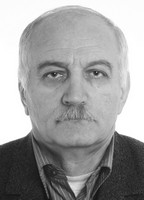Effects of cardiac contractility and vascular load on cardiac rhythm in athletes
Фотографии:
ˑ:
Teoriya i praktika fizicheskoy kultury №2 2017, pp.30-32
UDC 796.03
Associate Professor, PhD V.R. Orel1
Dr.Biol., Professor R.V. Tambovtseva1
1Russian State University of Physical Education, Sport, Youth and Tourism (GTSOLIFK), Moscow
Objective of the study was to analyze the effects of cardiac contractility and vascular load on cardiac rhythm in athletes of different specializations and skill levels at the age of 18-34 years. The following parameters were measured: systolic and diastolic blood pressure, minute blood volume and phases of the cardiac cycle (the latter two being recorded by means of the tetrapolar rheography using RHEODYNE-504 software-hardware measuring complex). Blood pressure and cardiac hemodynamic indices were measured both at rest and while pedaling a cycle ergometer, in a similar way to the performance measurements.
It is shown that, when performing muscular work on the cycle ergometer with the power of 500 and 1000 kg-m/min, the correlation relationships of the heart rate with peripheral resistance of the arterial system and average power of the left ventricular myocardium are positive, and HR increases statistically significantly with an increase of the peripheral resistance, as well as with an increase of the cardiac contractility.
Keywords: elastic and peripheral resistance, heart rate, power output, pressure, left ventricle.
References
- Voytenko Y.L., Orel V.R., Levushkin S.P. et al. Sosudistye i gemodinamicheskie reaktsii u vysokokvalifitsirovannykh plovtsov do i posle spetsificheskogo plavatelnogo testirovaniya [Vascular and hemodynamic responses in highly skilled swimmers before and after swimming a specific test]. Terapevt, 2015, no. 5-6, pp .55-60.
- Iberl K. Faktorny analiz. [Factor Analysis]. Moscow: Statistika publ., 1980, 398 p. (In Russ.)
- Instrumentalnye metody issledovaniya v kardiologii (Rukovodstvo) [Instrumental research methods in cardiology (Manual)]. Minsk, 1994, 272 p.
- Caro C.G., Pedley T.J., Schroter R.C., Seed W.A. Mekhanika krovoobrascheniya [Blood circulation mechanics]. Moscow: Mir publ., 1981, 624 p.
- Karpman V.L., Belotserkovskiy Z.B., Gudkov I.A. Testirovanie v sportivnoy meditsine [Testing in sports medicine]. Moscow: Fizkultura i sport publ., 1988, 208 p.
- Karpman V.L., Lyubina B.G. Dinamika krovoobrashcheniya u sportsmenov [Circulatory dynamics in athletes]. Moscow: Fizkultura i sport publ., 1982, 135 p.
- Karpman V.L., Orel V.R., Kochina I.G. et al. Elasticheskoe soprotivlenie arterialnoy sistemy u sportsmenov [Elastic resistance of the arterial system in athletes]. In: Kliniko-fiziologicheskie kharakteristiki serdechno-sosudistoy sistemy u sportsmenov [Clinical and physiological characteristics of cardiovascular system in athletes]. Moscow: RSAPC publ., 1994, pp.117-129.
- Orel V.R. Adaptivnye effekty vzaimodeystviya serdtsa i sosudov u sportsmenov [Adaptive effects of the interaction of heart and blood vessels in athletes]. Sportsmen v mezhdistsiplinarnom issledovanii [Athlete in interdisciplinary study]. Moscow: TVT Divizion publ., 2009, pp. 210-258.
- Orel V.R. Neinvazivnye otsenki pokazateley sosudistoy nagruzki serdtsa i ego sokratimosti u sportsmenov i u bolnykh gipertoniey [Non-invasive assessments of indicators of vascular cardiac load and contractility in athletes and patients with hypertension]. Terapevt, no. 9, 2013, pp. 24-29.
- Orel V.R., Mikhaylova A.V., Gatsunaev A.N. Sosudistaya nagruzka serdtsa vo vremya i posle okonchaniya myshechnoy raboty [Vascular cardiac load during and after muscular work]. Vestnik novykh meditsinskikh tekhnologiy, 2016, no. 2. E-journal.




 Журнал "THEORY AND PRACTICE
Журнал "THEORY AND PRACTICE